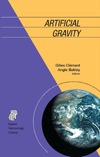Winner of the IAA 2008 Life Science Book Award This award is given annually to recognize excellence in publication made by a member or a corresponding member of the Academy in the fields related to life science.
Protecting the health, safety, and performance of exploration-class mission crews against the physiological deconditioning resulting from long-term weightlessness during transit and long-term reduced gravity during surface operations will require effective, multi-system countermeasures. Artificial gravity, which would replace terrestrial gravity with inertial forces generated by rotating the transit vehicle or by short-radius human centrifuge devices within the transit vehicle or surface habitat, has long been considered a potential solution. However, despite its attractiveness as an efficient, multi-system countermeasure and its potential for improving the environment and simplifying operational activities, much still needs to be learned regarding the human response to rotating environments before artificial gravity can be successfully implemented.
This book reviews the principle and rationale for using artificial gravity during space missions, and describes the current options proposed, including a short-radius centrifuge contained within a spacecraft. Experts provide recommendations on the research needed to assess whether or not short-radius centrifuge workouts can help limit deconditioning of physiological systems.
 |
|
О проекте
|
|
О проекте


